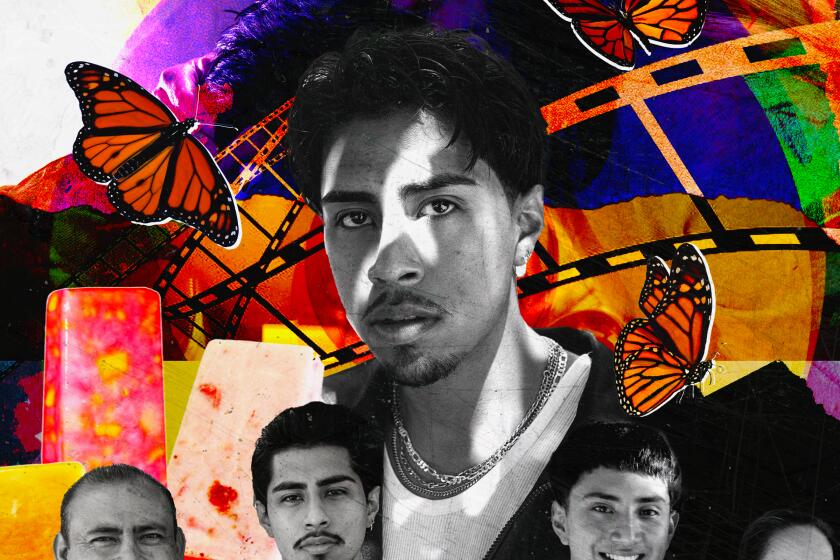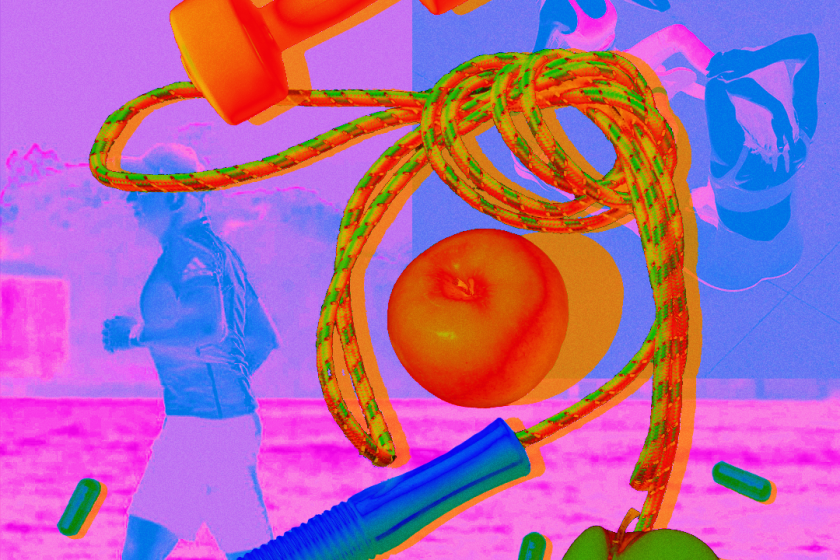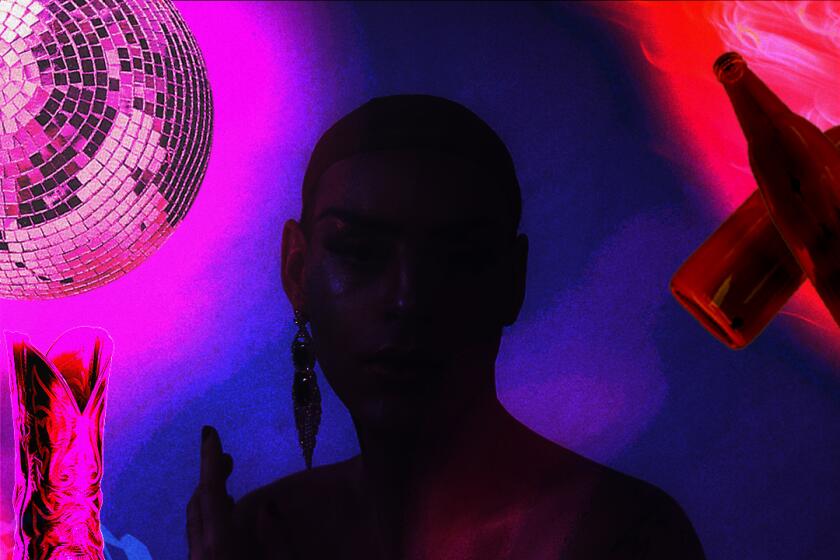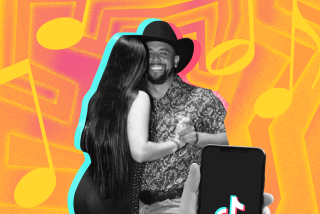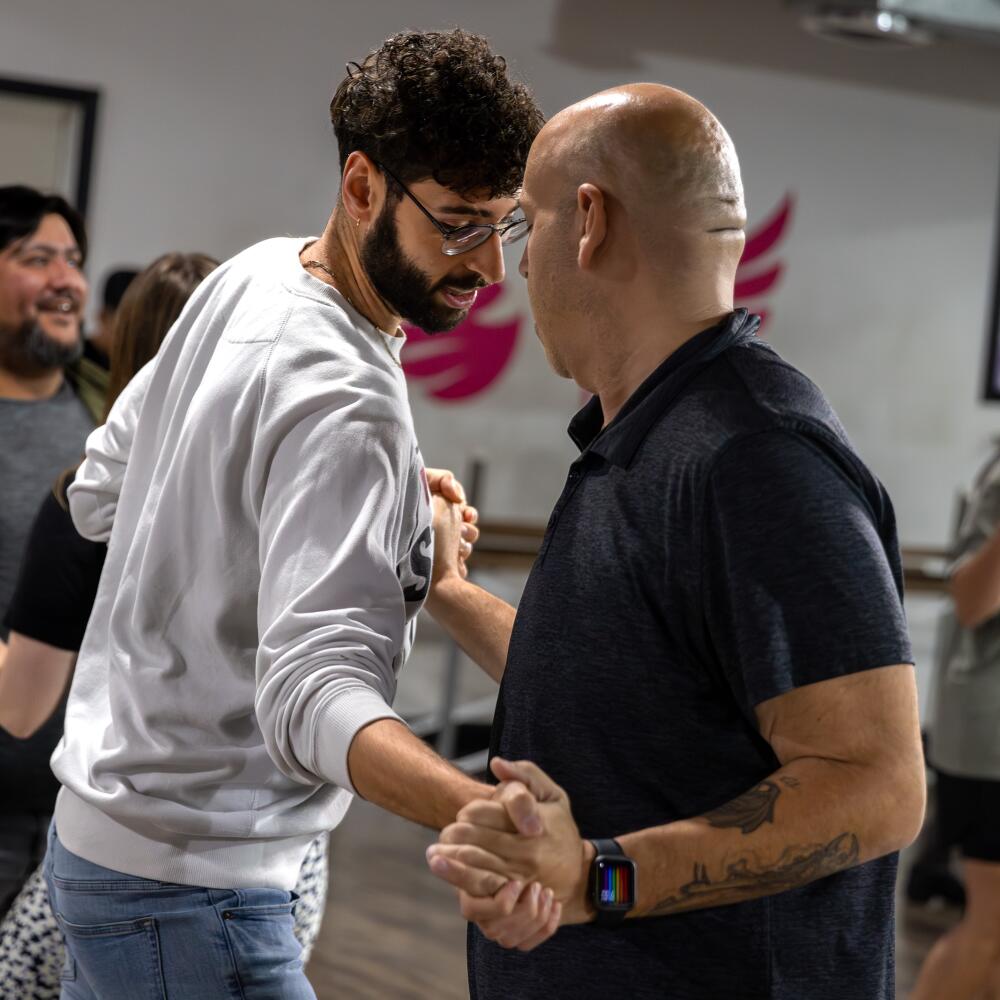
- Share via
Los Angeles-based dancer Bex Nitti never felt comfortable with the rules of Latin dance. The traditional set-up for partner work in Latin competitions, festivals and classes requires one male “lead” and a female “follow.” The lead sets up the moves in the couple’s choreography while guiding the follow through turns and complicated moves.
But Nitti, like many other performers, wanted room for more expansive roles. Across the U.S., dancers are making the Latin dance genre more inclusive, creating spaces and increasing visibility for same-gender dance couples and nonbinary performers.
A DACA recipient from a humble background, Ezekiel Pacheco’s story bears a striking resemblance to that of Nico, his character in ‘At the Gates.’
Nitti founded Queerchata, a Latin dance team, in 2020 while living in Seattle. The next year, they moved to Los Angeles, setting up a boom box at a park and inviting folks to join for classes. Now, Queerchata hosts recurring dance socials at Precinct DTLA designed to allow queer dancers to express themselves in a welcoming environment.
“If I was dancing in a heteronormative space and I wanted to be seen as a trans-masc person, I had to lead,” said Nitti. “And leading had to look a certain way, and it had to feel a certain way. None of those things felt like me. So I was constantly choosing: Am I performing for folks to see, or do I get to move how I want to move in this space?”
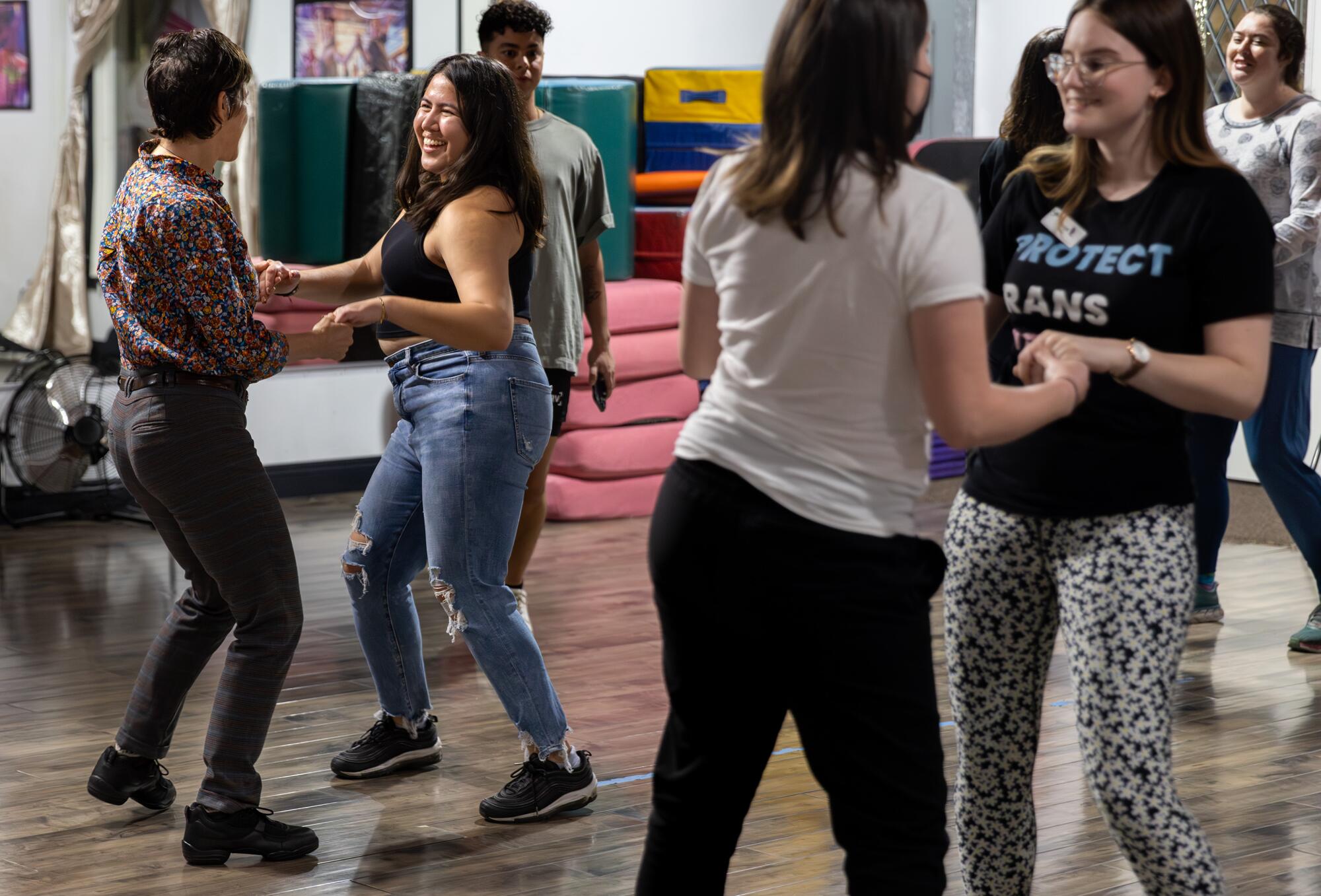
Dancer Jahaira Fajardo recalls how, a little over a decade ago, she knew of only two other female leads in the Latin dance genre. Social dancing normally took place in heteronormative spaces, so she never really expected to meet other queer performers. Angélica Medina remembers having similar experiences.
Now a married couple, Fajardo and Medina met at a social dance and co-own the Oakland-based In Lak’ech Dance Company. The couple struggled to enter competitions, since traditional gendered rules excluded them, but in December 2015 they won first place in the Latin Ladies Same Gender Division at the World Latin Dance Cup.
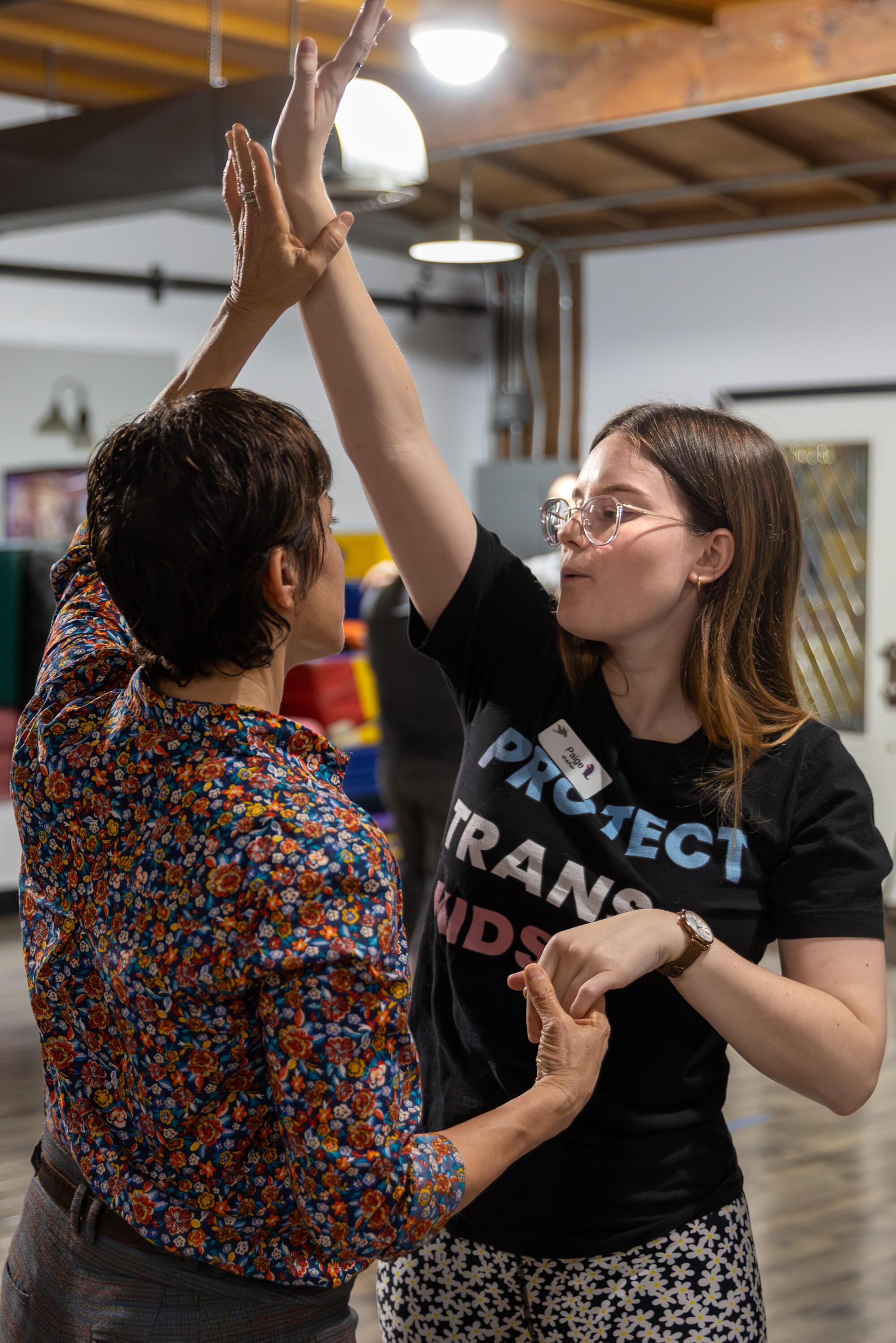
Despite the historic moment, there was still lots of work to do. Fajardo and Medina decided to create their own event — the Queer Afro Latin Dance Festival. Now in its sixth year, the festival invites dancers to show up as their full selves for workshops, showcases and a competition.
“Being in community is so important, especially for queer and trans folks who have experienced, and still experience, a lot of microaggressions, homophobia and transphobia,” said Medina.
When the foods of our culture are vilified as unhealthy, it can cause serious harm to our well-being.
When Reno-based couple Mariah and Andrea Burkhart met in 2016, Mariah danced as a follow in a bachata team, and Andrea was part of a burlesque group. Andrea brought the idea of doing same-gender partner dancing to Mariah after seeing Fajardo and Medina perform.
Being able to challenge the typical female and male dance roles, Andrea says, opened up a new world for them.

“Seeing Jahaira and Angelica, [I thought] ‘Oh, somebody like us can do it,’ From then on, my mentality was unstoppable,” said Andrea. “I knew our abilities. I knew what we could accomplish.”
The couple founded Embrace Dance Company nearly seven years ago and performs at events like the Queer Afro Latin Dance Festival while also teaching at gatherings such as the San Francisco Salsa, Bachata, Kizomba & Zouk Congress. But when she started dancing as a lead, Mariah says she continually heard assumptions about her talent.
“As a female lead, personally, it’s taken a lot to grab that respect from leads, especially male leads,” said Mariah. “It’s like constantly getting tested when we’re hired for the same event, like ‘Oh, let me see how your lead is,’ or ‘Oh, you actually are a good lead.’ For me, it was challenging to always be confident, and to know that I did the work to be on stage and at the level that I’m at now.”
Nitti says that in past events, they noticed how queer dancers might be asked to wear different costumes based on their physical appearance. “Being able to say, actually, no, this space is not allowing us to be who we are, this is not a space for us — is a muscle I’ve had to develop. And it’s been tough,” they said.

Despite these challenges, dancers continue to increase visibility for same-gender and queer partner work. Nitti taught at the Los Angeles Bachata Festival this past year and Queerchata’s dance team performed during a recent Los Angeles Sparks Pride Night.
In the fall of 2023, Florida-based dancers Alondra Torres and Brenda Rodriguez met during a social dance at the Chicago Loves Bachata festival. Torres wanted to find a new dance partner and Rodriguez agreed to collaborate. She said Torres’ style of leading lends a different energy from what she previously experienced in partner dancing. “We look more flowy together in comparison to, for example, how I felt dancing with a male,” said Rodriguez.
The duo’s recent performances include a Bachata Weekender in Toronto. Torres also previously taught at Queerchata events. For both dancers, it was rare to see a female lead, even in workshops.
When the foods of our culture are vilified as unhealthy, it can cause serious harm to our well-being.
“I would record the classes, and if there was a girl that was leading in one of the classes, the instructors kind of didn’t think that’s what the public wanted to see,” said Rodriguez.
Typically, male dancers lead female dancers into turns and dips. Like many performers, Nitti remembers learning that “a lead has to be a forceful lead.” Torres said watching the work of dancers like Pablo Perez helped her see the possibility of leading with a smoother, softer style.
“In bachata, we have this mentality that the one that we have to make look good is the follow, the female,” said Torres. “And what I like about Pablo is that he has his own style, but without diminishing the female dancer’s style. They can both shine.”
Los Angeles-based salsa choreographer Joel Gómez created Tumbao Dance Company, which hosted its first social dance party late last year, with a focus on inclusivity. At a competition, he met his husband, dancer and choreographer Jhesus Aponte, and the two often perform at events.
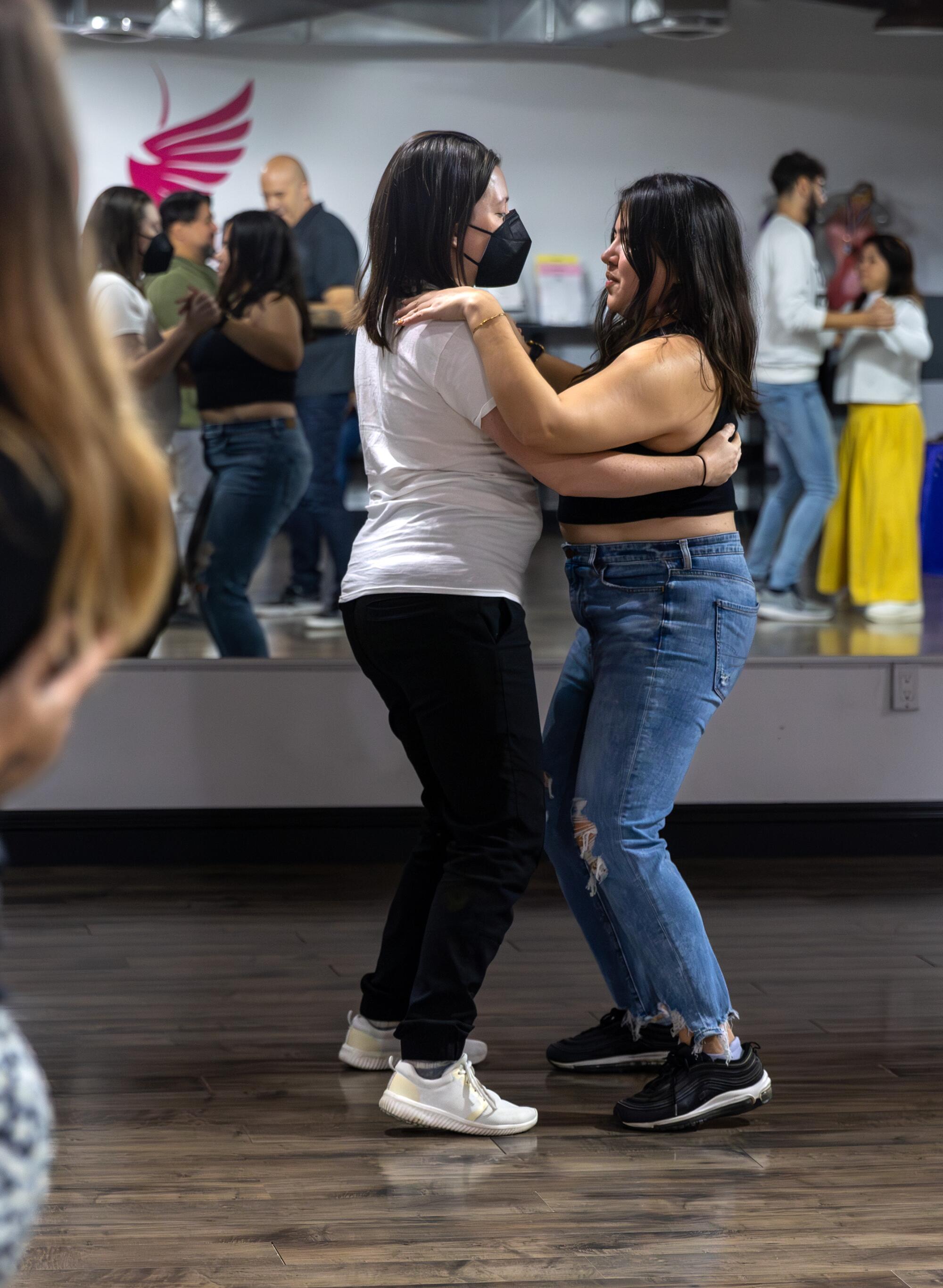
Gómez says he’s seen more colleagues dance in same-gender pairs in recent years than ever before. “It’s interesting how a movement that starts so small, with such a strong desire to make itself valid, changes people’s mentality,” said Gómez.
At a recent Bachata 2 dance class in Montebello, Nitti led dancers through choreography while playing songs like “Eres Tú” by Prince Royce and “Casi Tuya” by Joana Santos and Dani J. During partner work, they asked follows to stay on the dance floor, and leads to step aside; soon, each person found their partner. There were no roles handed out; instead, dancers chose their positions.
Kane K, who attended the recent lesson, says that Nitti’s teaching allows for more expansive versions of partner dancing.
Club Tempo is the main precursor of L.A.’s cowboy gay scene, located on Santa Monica Boulevard and Western Avenue.
“They’re a really big proponent of us coming in and dancing the part that we want to dance and not choosing the part that is more convenient for other people,” said K. “That’s very different not only from other partner dancing spaces, but also just from how so many queer and or femme people are socialized in their everyday lives.”
Christopher Armstrong says that the stress of his day job, where he manages a team, feels less intense after a Queerchata class, especially since he dances as a follow.
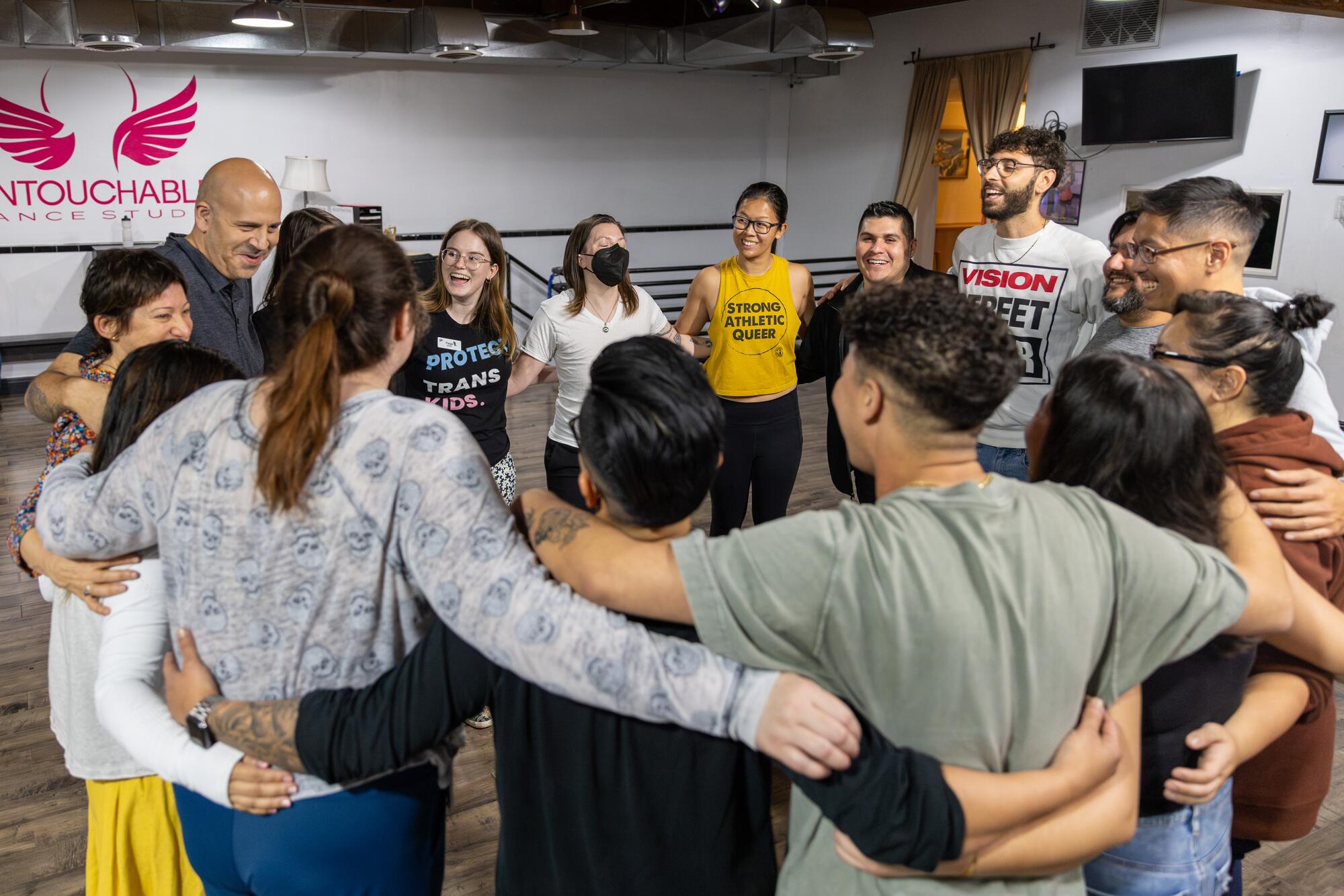
“It feels good to be able to come dance around and release some of that energy that’s been built up all day, especially when you’re connecting with other individuals,” said Armstrong.
In the lessons, K feels they are being taught to lead in a more gentle way, rather than a more forceful one. “I don’t have a desire to dance with someone as a follow that way, so I wouldn’t want to lead someone that way either,” they said.
Eva Recinos is an arts and culture journalist and creative nonfiction writer based in Los Angeles. She is the creator of Notes from Eva, a free monthly newsletter for creatives.
More to Read
The Latinx experience chronicled
Get the Latinx Files newsletter for stories that capture the multitudes within our communities.
You may occasionally receive promotional content from the Los Angeles Times.
